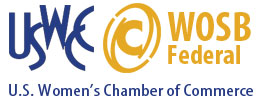
Six Tips for Creating a Professional Email Address
With the internet becoming the go-to means of communication for most people (and businesses), it’s important to have a professional email address. This is an address that you use for professional communication rather than for communicating with friends and family members.
The email address you use for professional communication should look professional. Too many people see their email address as a blank canvass rather than a sheet of resume paper (yes, we know that resume paper is a thing of the past, and we’re only using it to complete the analogy). To put it another way, you should create your email address as if you’re dressed up for a job interview rather than a party.
So how do you craft the perfect email address? Here are six tips for making sure your email address looks professional.
Choose a relevant email host (or use your own)
Your email host should be relevant and modern. For example, Hotmail is outdated at this point, so if you’re still using Hotmail, it’s time to modernize. Gmail is currently the standard, so that’s what you should use if you don’t have your own website.
If you do have your own website, a number of email addresses probably come as part of the package. So if you own staffingproxy.com, for example (we know you don’t, because we do!), you’ll be able to create an email address that uses @staffingproxy.com.
Be careful though. If you own an unprofessional-sounding website, this could be a liability. While hotdudeswithswords.com sounds kind of amazing, we’re not sure we’d be comfortable hiring someone who reaches out to us as jonathansmith@hotdudeswithswords.com. This (fictional, we hope) person should have used Gmail instead.
Use your first and last name
The single most important rule for a professional email address is that you should use your first and last name. The basic format looks like this:
- First name
- Last Name
- @
- The name of your email provider
Don’t worry about the @ symbol or the name of your email provider; those things will be provided automatically (and cannot be changed). You just need to come up with whatever comes before the @.
So if your name is Macy Moonflower, then something like macymoonflower@staffingproxy.com is the safest bet.
If you have a common name…
Of course, if you have a common name (such as John Smith or Jennifer Smith) and you’re using a common email provider such as Gmail, the ideal email address is likely unavailable. When that is the case, add your middle initial, middle name, or even your career field. For example: macyjmoonflower@staffingproxy.com, macyjennifermoonflower@staffingproxy.com, or macymoonfloweraudiologist@staffingproxy.com.
There’s a caveat to using your middle initial, however. If your middle name isn’t lengthy or oft-misspelled, it’s better to use your full middle name. The simple reason is that people tend to overlook the middle initial. That means you could have people trying to contact you and not being able to because they’ve mistyped your email address. This is especially true if your middle name starts with the same letter as your last name.
Look at these two email addresses:
- macymoonflower@staffingproxy.com
- macymmoonflower@staffingproxy.com
By comparing them against each other, the addition of the middle initial is obvious. But when you glance at the second one in any other context, it’s far too easy to overlook the fact that there’s a middle initial there at all. So if your email address is the latter, and someone tries to get in touch with you at the former, you’ll never receive the email.
It’s impossible to say how many emails have been lost to the void for this reason, or how many possible job opportunities were missed because of it, but our guess is that it’s probably a lot more than you’d expect. So while it’s not unprofessional to use a middle initial, there are potential drawbacks. Keep that in mind when setting up your email account.
Avoid using numbers
One thing people often do is add a string of numbers to the end of their email address, like macymoonflower1023@staffingproxy.com. While many email providers will recommend these, we want to dissuade you from using them. There are several reasons for this.
First off, that number reveals something personal about you. We can assume that 1023 in the above email address is probably a birthday: 10/23 (October 23). Or it might be a home address, or even the last four digits of a social security number. Since many people have a particular string of numbers that they’re drawn to, these same numbers end up as a PIN or part of a password. When predatory entities (like hackers and phishing scammers) spot this email pattern, they recognize a potentially vulnerable target.
Secondly, some of these number patterns come off as cheesy. If we had a penny for every time we saw an email address with 007 in it, we’d be retired by now. Sure, you might be the world’s biggest fan of James Bond, but that doesn’t mean your employer shares your enthusiasm. In fact, this comes off as unprofessional.
Check your professional email account as often as you can
When you have a separate email account for personal use and for business, it’s easy to forget about one of them. Be sure to be active on your professional email account, checking in daily. If you’re looking for work, you definitely don’t want a potential employer to be left wondering if you ever got their email.
Be active, check your email often, and respond promptly to professional inquiries. Doing all of this shows that you take this email account seriously.
Put this advice to the test
You don’t have to take our word for it. If you want to verify this advice for yourself, then put it to the test.
One simple way to test this is to make a list of your professional email contacts. Type them all out in a document and see if you notice any patterns. How many of them use something that’s not their real name? How many include numbers in them? How many times do you see 007? While there are folks who buck trends in any field, we’re going to go out on a limb and say that a majority of your professional contacts use the basic pattern we’ve outlined here.
If you want to run a more thorough test, alternate emails when sending out your resume. Use one professional email address and one unprofessional one (cutekittens1220@email.com, for example) and see which one gets more responses.
Conclusion
Your email address says a lot about you. If you want to be seen as a professional who takes their work seriously, then your email address should reflect that. If you follow the six tips we’ve provided above, you’ll have an excellent email address that shows you’re committed to professionalism. We’re not even exaggerating when we say that doing so could be the difference between landing a job and being rejected for one.
If you’re ready to start looking for work in healthcare – or audiology specifically – reach out to Staffing Proxy today to see what we can do for you.

